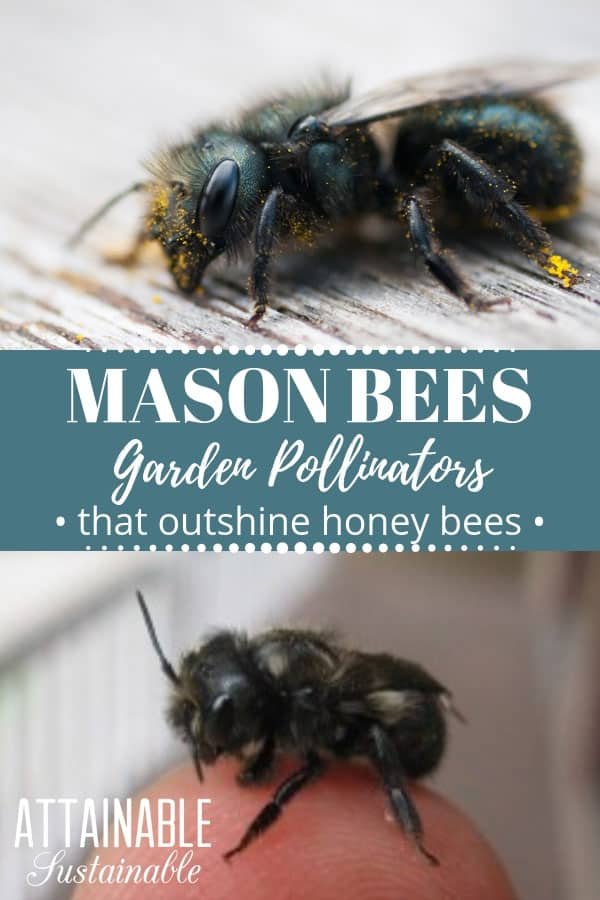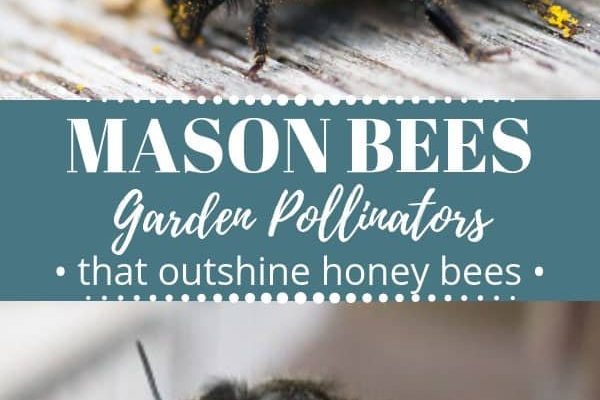
Mason bees, often called “solitary bees,” are different from the more familiar honeybees. Unlike honeybees that live in colonies and produce honey, mason bees do their own thing. They create nests in small holes, whether in wood or other natural materials, and do a fantastic job pollinating plants. So, if you’re yearning for a more vibrant and fruitful garden, let’s dive deep into how to attract these delightful creatures to your space.
Understanding Mason Bees
Before we embark on the journey of attracting these bees, it’s essential to understand who they are. Mason bees belong to the family *Megachilidae* and are known for their unique nesting habits. Instead of building hives like honeybees, they prefer to make their homes in small cavities. Think of them like little architects, using mud to seal their nests—hence the name “mason.”
Here’s the thing: mason bees are super efficient pollinators. They can pollinate flowers in a fraction of the time it takes honeybees. One mason bee can do the work of dozens of honeybees in terms of pollination due to their tendency to visit many plants in a short period. This makes them incredibly beneficial for gardeners who want to enhance their garden’s yield without relying on chemical sprays or fertilizers.
Mason bees are also quite forgiving when it comes to their habitats. While they do enjoy flowers, they also appreciate natural materials for nesting. This means you can create a mason bee-friendly environment without a huge redesign of your garden. Let’s explore some effective ways to welcome these helpful critters.
Create an Inviting Habitat
To attract mason bees, it’s crucial to set up a welcoming habitat. Think of your backyard as a cozy apartment for these bees. The first step is to provide suitable nesting sites. You can do this by creating bee houses or leaving natural materials around.
Mason bee houses are essentially blocks of wood with holes drilled into them. These holes should be about 5/16 inches wide and vary in depth to accommodate different bee species. Ideally, they should be placed at least 3 feet off the ground and facing south to catch morning sunlight. Positioning them near flowering plants will help the bees find their new home quickly.
Another great way to attract mason bees is to use natural materials for nesting. You can leave hollow stems from plants like *raspberries* or *blackberries*, or even small twigs with holes in them, lying around your garden. These natural nesting sites can be just as appealing for mason bees as the bee houses you buy.
Choose the Right Flowers
Now that we have the habitat sorted, let’s bring the flowers into play. Mason bees are attracted to flowers that are rich in pollen and nectar. You might be wondering, “What flowers should I plant?” Great question! Here are some flowers mason bees love:
- Blueberry
- Cherry
- Willow
- Buttercup
- Sunflower
- Lavender
When planting, aim for a diverse selection of flowers that bloom at different times throughout the spring and summer. This way, you ensure that there’s always something in bloom for the bees to enjoy. Remember, the more colors and types of flowers, the more enticing your garden becomes!
Also, it’s best to avoid hybrid flowers that may lack adequate nectar or pollen. Native plants are usually a safe bet since they’ve co-evolved with local bee populations and are an excellent food source.
Maintain a Chemical-Free Garden
To really roll out the welcome mat for mason bees, it’s vital to keep your garden free from pesticides and herbicides. These chemicals are not only harmful to bees but can also disrupt the entire ecosystem.
Instead of reaching for a pesticide, consider natural alternatives. For instance, introducing beneficial insects like ladybugs or using neem oil can help manage pests without harming your bee population. Organic practices also promote soil health, which in turn supports healthy plants and attracts more bees over time.
If you do notice a pest problem, try manual removal or companion planting to deter them instead of resorting to chemicals. A chemical-free garden is not just better for mason bees but also for you and your family.
Provide Water Sources
Just like us, mason bees need water for survival. Creating a water source in your garden can make it even more attractive. You don’t have to build a pond; a simple birdbath or a shallow dish filled with water will suffice. Just make sure to add some pebbles or stones for the bees to perch on so they don’t drown.
Change the water regularly to keep it fresh and clean. This will provide a reliable drinking spot for not just mason bees but also other pollinators, encouraging more wildlife to visit your garden. A bustling garden filled with life is a joy to witness!
Educate and Involve the Community
One of the most fulfilling aspects of attracting mason bees is sharing your knowledge with others. Consider starting a local initiative with friends or neighbors to promote bee-friendly practices. You could host a bee-friendly gardening workshop or simply chat about your experiences over coffee.
By educating others about mason bees and their importance in our ecosystems, you’re not just helping your garden flourish—you’re fostering a community that values wildlife. Plus, you may even discover new tips and tricks from others that could enhance your own garden!
Observe and Enjoy
As you implement these tips, take the time to observe the changes in your garden. It can be thrilling to see mason bees buzzing around, visiting your flowers and nesting in their new homes. Keep a journal or take photos to capture the transformations happening in your space.
Here’s a fun idea: consider setting up a small observation area where you can sit quietly and watch the bees at work. It’s a peaceful activity and a great way to connect with nature. You’ll gain a deeper appreciation for these little pollinators and the vital role they play in our ecosystem.
In conclusion, attracting mason bees to your garden isn’t just about enhancing your plants; it’s about creating a vibrant, lively environment that benefits everyone. With a bit of patience and effort, you can cultivate a space that invites these essential pollinators to thrive. So, roll up your sleeves, get planting, and enjoy the buzz of a healthy, bee-friendly garden!

